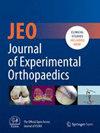Surgeons consider Rockwood classification the most important factor for decision-making in acute, high-grade acromioclavicular dislocations
Abstract
Purpose
The aim of this study is to investigate the influence of patient-specific factors, including age, lifestyle considerations as well as the extent of injury according to the Rockwood classification (RW), on the surgeon's decision-making in the choice between operative and nonoperative treatment for acute, high-grade acromioclavicular (AC) joint dislocations.
Methods
Orthopaedic and trauma surgeons were requested to complete an online questionnaire consisting of closed and open questions regarding the treatment of acute, high-grade AC joint dislocations and 24 fictive clinical scenarios.
Results
A total of 133 answered questionnaires were collected. 27 different nationalities from five continents were represented. The included participants had a median experience of 12 years (interquartile range: 2–41). Overall, the treatment option for surgery (answer: YES) was chosen in 2426 answers (76% of cases) compared to ‘NO’ in 766 (24% of cases). RW classification was considered the most important factor influencing surgical decision-making for most surgeons (69%). Two thirds of the participants answered that smoking does not impact their decision towards surgery and as to the influence of body mass index (BMI) on decision-making, half of the respondents would not alter their preferred treatment based on BMI. Finally, there were no significant differences in decision-making regarding the influence of the participant's demographics.
Conclusion
This study highlights that RW classification is the most important factor to consider in the surgeon's decision-making between operative and nonoperative treatment in acute, high-grade AC joint dislocations. Participants preferred operative treatment over nonoperative treatment in acute, high-grade AC joint dislocation in 76% of case scenarios, increasing up to 90% when RW Grade III lesions were not taken into account. These findings contrast with recent studies reporting good functional outcomes of conservatively treated acute, high-grade AC injuries and highlight the need to bridge the gap between evidence and practice.
Level of Evidence
Level V.

 求助内容:
求助内容: 应助结果提醒方式:
应助结果提醒方式:


